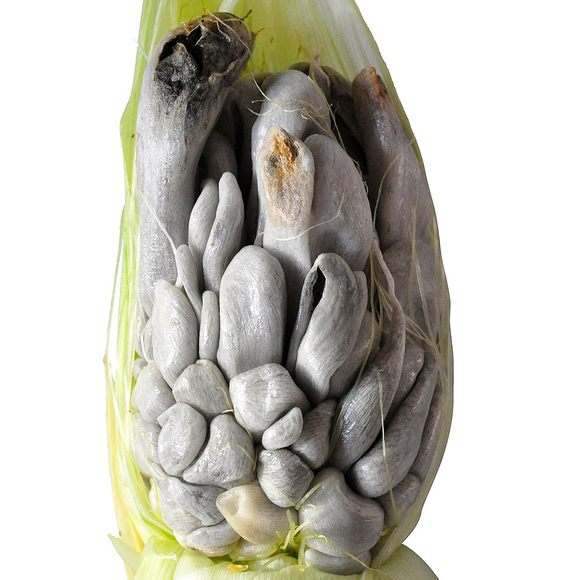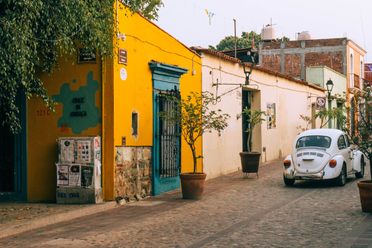Ingredients & Condiments
Huitlacoche
The Mexican fungal delicacy that makes corn taste like a mushroom.
When Aztec farmers found blue-black spores overtaking their corn, they didn’t worry. They rejoiced. It was huitlacoche, corn infected by the pathogenic fungus Ustilago maydis, which bestows a rich, mushroom-like flavor and makes for an excellent quesadilla filling.
While the meaning of huitlacoche is debated, the name derives from the Aztec language, Nahuatl, and most believe it translates best to “sleeping excrescence,” because the fungus grows around the kernels and impedes their growth, thus leaving them to “sleep.” In the United States, farmers use a less poetic name: corn smut.
While it is technically a plant disease, corn smut is a prized ingredient in Mexican cuisine, and an infected cob is worth significantly more than a regular one. The bulbous blue-black galls that develop retain much of the flavor of the corn, but also contribute a nutty, mushroomy taste that makes it distinctly fungal.
The culinary applications are myriad; the smoky, earthy flavor makes a good accompaniment to fat in cheese and meats like chorizo. It can be sautéed simply with onions, epazote (a cilantro-like herb), and chilies, and the resulting inky mixture enriches everything from tacos to tamales to omelets. Most commonly, it is folded into a quesadilla with melted cheese and topped with salsas. Huitlacoche quesadillas are available all over central and southern Mexico from the griddles of street carts, restaurants, and municipal markets.
In recent years, due to Mexican immigration and epicurean demand (as well as clever rebranding—some menus describe it as “Mexican truffles”), huitlacoche has become widely available in its native home and abroad. Its status as a much sought-after delicacy remains a testament to the culinary ingenuity of the Aztecs: A scourge on their staple crop was also a blessing in disguise.
Written By
 Ike Allen
Ike Allen
Edited by
Sources
- www.npr.org/sections/thesalt/2015/08/24/433232707/scourge-no-more-chefs-invite-corn-fungus-to-the-plate
- munchies.vice.com/en_us/article/78d3de/httpmunchies-vice-comarticlesmexico-citys-markets-are-full-of-huitlacoche-corn-smut
- books.google.com/books?id=JMxLEsZYF2sC&pg=PA158&dq=huitlacoche+recipe&hl=en&sa=X&ved=0ahUKEwiGtLXWjYfWAhUK7iYKHR5iAWkQ6AEILjAB#v=onepage&q&f=false
- www.foodnetwork.com/recipes/corn-fungus-tamales-tamales-de-huitlacoche-recipe-1908957
- allrecipes.com/recipe/246673/corn-truffle-huitlacoche-quesadillas/
- books.google.com/books?id=bKVCtH4AjwgC&printsec=frontcover&dq=on+food+and+cooking&hl=en&sa=X&ved=0ahUKEwiU1NrswZ7XAhUn2oMKHb_pD9YQ6AEIJjAA#v=onepage&q=huitlaoche&f=false
The Atlas Obscura Podcast is Back!




















